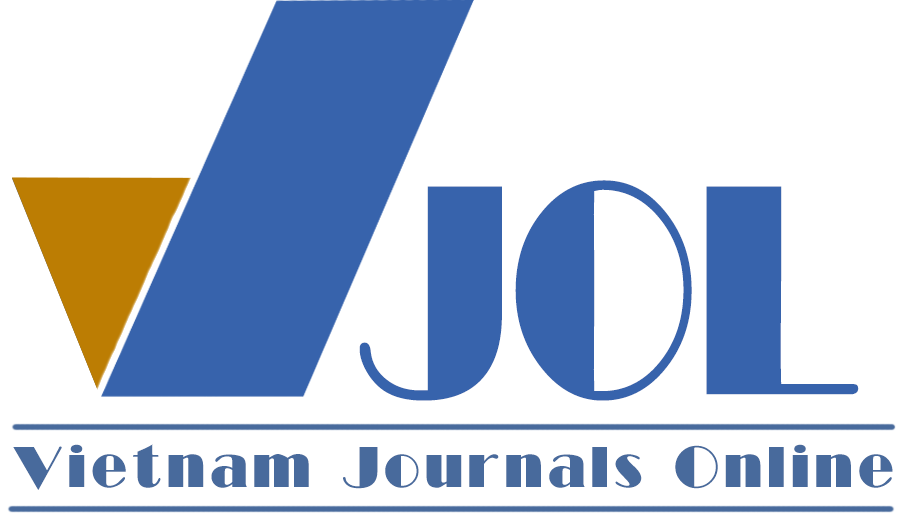Assessment of factors affecting tourism policy implementation in businesses: A case study of Hanoi, Vietnam
Authors
DOI: https://doi.org/10.57110/vnu-jeb.v4i2.275Keywords:
Tourism, tourism policy, policy implementation, tourism businesses, HanoiReferences
Airey, D. (2015). Developments in understanding tourism policy. Tourism Review, 70(4), 246-258. https://doi.org/10.1108/TR-08-2014-0052
Benson, J. K. (1983). Interorganizational networks and policy sectors. In D. L. Rogers & D. A. Whetten (Eds.), Interorganizational Coordination: Theory, Research, and Implementation (pp. 119–145). Iowa State University Press.
Dimoska T., Tuntev, Z., & Nikolovski, B. (2015). The relationship between small and medium-sized enterprises, tourism and economic development. Journal of Process Management – New Technologies, International, 3(1), 18-27. https://scindeks-clanci.ceon.rs/data/pdf/2334-735X/2015/2334-735X1501018D.pdf
Dodds R., & Butler R. (2010). Barriers to implementing sustainable tourism policy in mass tourism destinations. Tourismos: An International Multidisciplinary Journal of Ttourism, 5(1), 35-53. https://mpra.ub.uni-muenchen.de/25162/1/MPRA_paper_25162.pdf
Duong, T. (2022). Hanoi tourism: Potential and development solutions. Communist Review.
Dredge, D., & Jenkins, J. (2007). Tourism Planning and Policy. John Wiley & Sons.
Elliot, J. (1997). Tourism: Politics and Public Sector Management. Routledge.
Fotuhinia, A., Toranlo, H. S., & Mazidi, M. S. (2014). A review on factors affecting on tourism policy implementation: A tool on the development of the tourism industry in Islamic Republic of Iran. Developing Country Studies, 4(22), 53-63. https://core.ac.uk/download/pdf/234682043.pdf
GeoparkLIFE. (2017). Good Practice Guide the Role of Tourism Enterprises. GeoparkLIFE Tourism for Conservation.
Getz, D., Carlsen, J., & Morrison, A. (2004). The Family Business in Tourism and Hospitality. CABI Publishing.
Hall, C. M., & Jenkins, J. M. (1995). Tourism and public policy. Routledge.
Hill, M. (1997). The Policy Process A Reader. Routledge.
Ingham, G. (2008). Capitalism. Polity Press.
Jessop, B. (1990). State Theory: Putting Capitalist States in Their Place. Polity Press.
Jessop, B. (2001). Institutional re(turns) and the strategic-relational approach. Environment and Planning A, 33, 1213-1235. https://doi.org/10.1068/a32183
Keller, P. (1999). Future‐oriented tourism policy: Synthesis of the 49th AIEST congress. The Tourist Review, 54(3), 2–6. https://doi.org/10.1108/eb058306
Keller, P. (2015). Tourism policy in advanced economies: How can it be effective and efficient? Tourism Review, 70(4). http://doi.org/10.1108/TR-05-2015-0017.
Krutwaysho, O., & Bramwell B. (2010). Tourism policy implementation and society. Annals of Tourism Research, 37(3), 670–691. https://doi.org/10.1016/j.annals.2009.12.004
Lindblom, C. E. (1980). The Policy-making Process (2nd ed). Prentice-Hall.
Lund-Durlacher, D. (2015). Corporate social responsibility in tourism. In P. Moscardo & D. G. Pearce (Eds.), Education for Sustainability in Tourism - A Handbook of Processes, Resources, and Strategies (pp. 59-73). Springer. https://doi.org/10.1007/978-3-662-47470-9_4
Marsh, D., & Smith, M. (2000). Understanding policy networks: Towards a dialectical approach. Political Studies, 48(1), 4-21. https://doi.org/10.1111/1467-9248.00247
Millet, I. (1998). Ethical decision making using the analytic hierarchy process. Journal of Business Ethics, 17(11), 1197-1204. https://doi.org/10.1023/a:1005700314298
Mir, V. M. (2000). La Política Turística: Una Aproximación. Cuadernos de Turismo, 6, 7-27.
Novelli, M., Schmitz, B., Spencer, T. (2006). Networks, clusters and innovation in tourism: A UK experience. Tourism Management 27, 1141–1152. https://doi.org/10.1016/j.tourman.2005.11.011
O’Toole, L. (1995). Rational choice and policy implementation. American Review of Public Administration, 25(1), 43-57. https://doi.org/10.1177/027507409502500103
OECD. (2018c). Analysing megatrends to better shape the future of tourism. OECD Tourism Papers, 2018/02. https://doi.org/10.1787/d465eb68-en
OECD. (2020). Tourism trends and policy priorities. In OECD, OECD Tourism Trends and Policies 2020 (pp. 13-45). OECD Publishing. https://doi.org/10.1787/6b47b985-en
Vietnam National Assembly. (2017). Law no. 09/2017/QH14 of the National Assembly: Law on tourism.
Saaty, R. W. (1987). The analytic hierarchy process – What it is and how it is used. Mathematical Modelling 9(3-5), 161-176. https://doi.org/10.1016/0270-0255(87)90473-8
Thomas, R. ( 2007). Tourism partnerships and small firms: Power, participation and partition. International Journal of Entrepreneurship and Innovation, 8(1), 37-43. https://doi.org/10.5367/000000007780007344
Vietnam News Agency. (2023). The capital’s tourism industry continues to innovate to break through. Ministry of Culture, Sports and Tourism of the Socialist Republic of Vietnam.
Velasco, M. (2016). Tourism Policy. In A. Farazmand, Global Encyclopedia of Public Administration, Public Policy, and Governance. Springer. https://doi.org/10.1007/978-3-319-31816-5_2674-1.
Wang, D., & Ap, J. (2013). Factors affecting tourism policy implementation: A conceptual framework and a case study in China. Tourism Management, 36, 221-233. https://doi.org/10.1016/j.tourman.2012.11.021
Williams, A. M., & Shaw, G..(2011). Internationalization and innovation in tourism. Annals of Tourism Research, 38(1), 27-51. https://doi.org/10.1016/j.annals.2010.09.006
Younis, T. (1990). Implementation in public policy. Billing & Sons Ltd.
Zhang, Q. H., Chong, K., & Jenkins, C. L. (2002). Tourism policy implementation in mainland China: an enterprise perspective. International Journal of Contemporary Hospitality Management, 14(1), 38-42. https://doi.org/10.1108/09596110210415114
Downloads
Downloads
Published
Abstract View
PDF Downloaded
How to Cite
Issue
Section
License
Copyright (c) 2024 Le Thi Thanh Huyen, Nguyen The Vinh, Hoang Xuan Vinh, Luu Huu Van

This work is licensed under a Creative Commons Attribution-NonCommercial 4.0 International License.
by VNU Journal of Economics and Business






